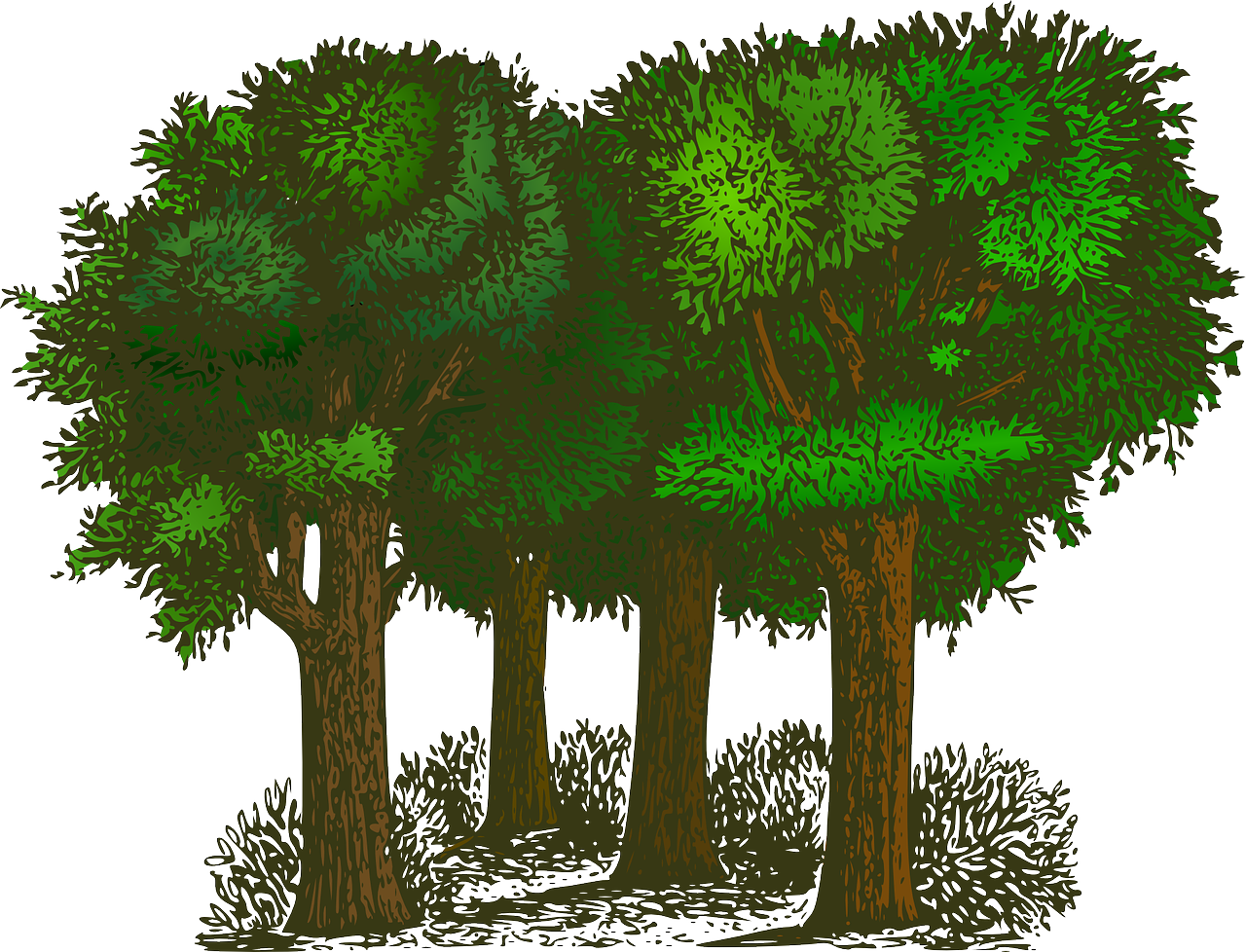
How to Plant a Tree in the Pacific Northwest
Planting a tree is a wonderful way to contribute to the environment and create a lasting impact on your surroundings. In the lush and verdant region of the Pacific Northwest, where nature thrives, planting trees is especially important. Whether you’re a seasoned gardener or a beginner with a green thumb, this step-by-step guide will walk you through the process of planting a tree in the Pacific Northwest and ensure its healthy growth for years to come.
Table of Contents
- Introduction: The significance of tree planting in the Pacific Northwest
- Selecting the right tree species
- Choosing the ideal planting location
- Preparing the planting site
- Digging the planting hole
- Planting the tree properly
- Backfilling and watering the tree
- Mulching for moisture retention and weed control
- Staking and supporting the young tree
- Providing regular care and maintenance
- Protecting the tree from common pests and diseases
- Pruning and shaping the tree as it grows
- Conclusion
- FAQs
1. Introduction: The significance of tree planting in the Pacific Northwest
Trees play a vital role in the Pacific Northwest ecosystem, providing numerous benefits such as improving air quality, reducing erosion, and creating habitat for wildlife. Additionally, they contribute to the overall beauty and aesthetic appeal of the region. By planting trees, you actively participate in the preservation and enhancement of the natural environment, making a positive impact on the local ecosystem.
2. Selecting the right tree species
Choosing the right tree species is essential for successful tree planting. Consider factors such as climate, soil conditions, and available space. In the Pacific Northwest, native species like Douglas Fir, Western Red Cedar, and Bigleaf Maple thrive well due to their adaptability to the region’s climate and soil.
Research the characteristics and growth requirements of different tree species to ensure you select one that is well-suited to your specific location.
3. Choosing the ideal planting location
The success of a tree largely depends on its planting location. Select a spot that provides adequate sunlight, proper drainage, and sufficient space for the tree to grow. Consider the tree’s mature size and ensure it won’t interfere with buildings, power lines, or other nearby plants.
Additionally, assess the soil conditions, making sure it is well-drained and rich in organic matter. Avoid areas prone to flooding or compacted soil, as these can negatively impact the tree’s growth.
4. Preparing the planting site
Before planting the tree, it’s important to prepare the planting site properly. Remove any weeds, grass, or other vegetation from the area. Clear a circle of approximately 3 to 4 feet in diameter around the planting location to minimize competition for resources.
5. Digging the planting hole
Dig a planting hole that is wide and shallow rather than deep. The hole should be two to three times wider than the tree’s root ball but only as deep as the root ball itself. Loosen the soil at the bottom of the hole to encourage the tree’s roots to penetrate the ground easily.
6. Planting the tree properly
Carefully remove the tree from its container, taking care not to damage the roots. Gently tease out any tangled or circling roots to encourage outward growth. Place the tree in the center of the hole, ensuring that the top of the root ball is level with or slightly above the ground.
Backfill the hole with the soil, making sure to eliminate any air pockets by gently firming the soil around the roots. Avoid compacting the soil too tightly, as this can hinder root growth.
7. Backfilling and watering the tree
Once the tree is securely planted, backfill the hole completely, ensuring that the soil is level with the surrounding ground. After backfilling, water the tree thoroughly. This helps settle the soil around the roots and provides essential moisture.
8. Mulching for moisture retention and weed control
Apply a layer of organic mulch around the base of the tree, leaving a small space around the trunk to prevent moisture accumulation. Mulching helps retain soil moisture, suppresses weed growth, and regulates soil temperature. Use materials such as wood chips, straw, or bark mulch, and maintain a depth of 2 to 4 inches.
9. Staking and supporting the young tree
If your newly planted tree is tall or prone to wind damage, consider staking it for support. Use soft tree ties or straps to secure the tree to stakes, ensuring that they are not too tight to allow for some movement. Regularly check the stakes and ties and adjust them as necessary to accommodate the tree’s growth.
10. Providing regular care and maintenance
Regular care is crucial for the healthy growth of your tree. Water the tree deeply but infrequently, allowing the soil to dry out slightly between waterings. Adjust the watering frequency based on weather conditions and the tree’s specific needs.
Monitor the tree for signs of pests, diseases, or nutrient deficiencies. Prune dead or damaged branches, and shape the tree as it grows to maintain a desirable form.
11. Protecting the tree from common pests and diseases
Keep an eye out for common pests in the Pacific Northwest, such as aphids, caterpillars, and borers. Implement preventive measures such as regular inspections, maintaining plant health, and using environmentally friendly pest control methods when necessary.
Be aware of common diseases like root rot or powdery mildew. Provide proper air circulation, avoid overwatering, and promptly address any signs of disease to prevent its spread.
12. Pruning and shaping the tree as it grows
Pruning plays a vital role in maintaining the health and structure of the tree. Remove any dead, damaged, or crossing branches to improve air circulation and prevent potential hazards. Prune during the tree’s dormant season to minimize stress.
Consult a professional arborist if you’re unsure about proper pruning techniques or if you need assistance with shaping the tree for a desired form.
Conclusion
Planting a tree in the Pacific Northwest is a rewarding endeavor that benefits both the environment and future generations. By following these steps, you can ensure the successful establishment and growth of your tree. Remember to choose the right species, provide optimal planting conditions, and provide ongoing care and maintenance. By doing so, you contribute to the beauty and sustainability of the Pacific Northwest’s natural landscape.
FAQ 1: When is the best time to plant a tree in the Pacific Northwest?
The best time to plant a tree in the Pacific Northwest is during the dormant season, which typically occurs in late fall to early spring. Planting during this time allows the tree to establish its root system before the onset of hot, dry weather. However, with proper care and watering, trees can be planted throughout the year.
FAQ 2: How often should I water my newly planted tree?
Newly planted trees require regular watering to ensure their survival and healthy growth. Generally, it’s recommended to water the tree deeply once or twice a week, especially during dry periods. However, the frequency may vary depending on factors such as soil type, weather conditions, and the specific needs of the tree species. Monitor the moisture level of the soil and adjust the watering schedule accordingly.
FAQ 3: What are some native tree species suitable for planting in the Pacific Northwest?
The Pacific Northwest is known for its diverse native tree species. Some popular options for planting in the region include Douglas Fir, Western Red Cedar, Sitka Spruce, Bigleaf Maple, Pacific Dogwood, and Oregon White Oak. These trees are well-adapted to the local climate and provide important ecological benefits.
FAQ 4: Do I need to fertilize my newly planted tree?
In most cases, newly planted trees do not require immediate fertilization. It’s generally recommended to focus on providing proper soil preparation and organic matter during planting. However, if the soil lacks essential nutrients, a slow-release, balanced fertilizer specifically formulated for trees can be applied in the early spring. It’s best to consult with a local horticulturist or arborist for specific fertilizer recommendations based on your tree species and soil conditions.
FAQ 5: Can I plant a tree in a small urban space?
Yes, you can plant a tree in a small urban space. Select tree species that are suitable for smaller areas, such as columnar or dwarf varieties. Consider the mature size of the tree and choose one that fits the available space without causing issues to buildings, utilities, or sidewalks. Additionally, container gardening or vertical gardening techniques can be used to maximize space while still enjoying the benefits of a tree.
We hope these revised FAQs provide you with the information you were seeking about planting trees in the Pacific Northwest. Happy tree planting!
MORE USEFUL FACTS
Native Trees: Enhancing Biodiversity and Ecosystems
Native trees play a vital role in maintaining biodiversity and supporting healthy ecosystems. These trees have evolved and adapted to specific regions over thousands of years, making them well-suited to the local environment and providing numerous benefits. They offer food and shelter for wildlife, stabilize soil, improve air and water quality, and contribute to the overall health of the ecosystem. By planting and preserving native trees, we can enhance the natural beauty of our landscapes while fostering ecological balance and sustainability.
Native Trees in Oregon:
- Douglas Fir
- Western Hemlock
- Western Red Cedar
- Ponderosa Pine
- Sitka Spruce
- Black Cottonwood
- Oregon White Oak
- Bigleaf Maple
- Pacific Madrone
- Grand Fir
Native Trees in Washington:
- Western Hemlock
- Douglas Fir
- Sitka Spruce
- Western Red Cedar
- Ponderosa Pine
- Noble Fir
- Shore Pine
- Bigleaf Maple
- Black Cottonwood
- Pacific Dogwood
Native Trees in Idaho:
- Western White Pine
- Douglas Fir
- Englemann Spruce
- Lodgepole Pine
- Ponderosa Pine
- Western Red Cedar
- Quaking Aspen
- Rocky Mountain Juniper
- Black Cottonwood
- Paper Birch
These are just a few examples of the native tree species found in each state. Each tree contributes to the unique ecosystems and landscapes of their respective regions, highlighting the importance of preserving and planting native trees for the well-being of our environment.

